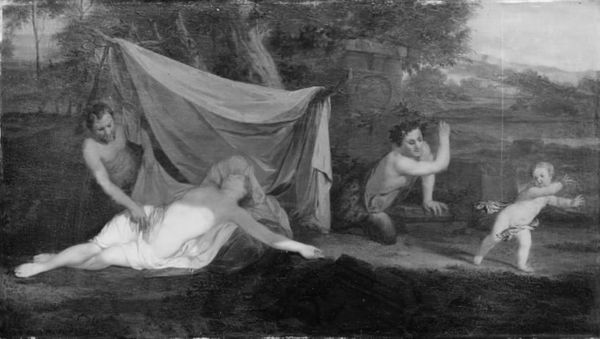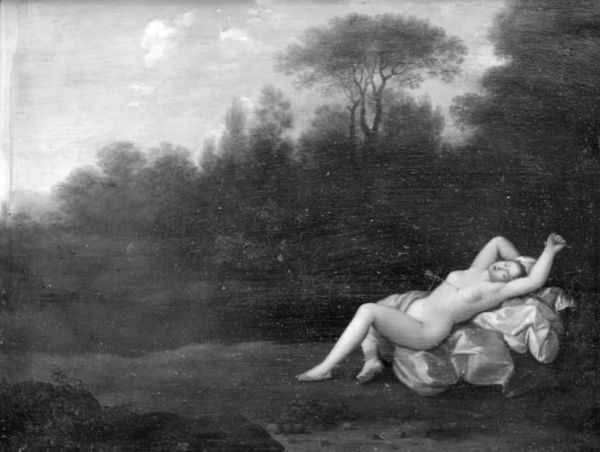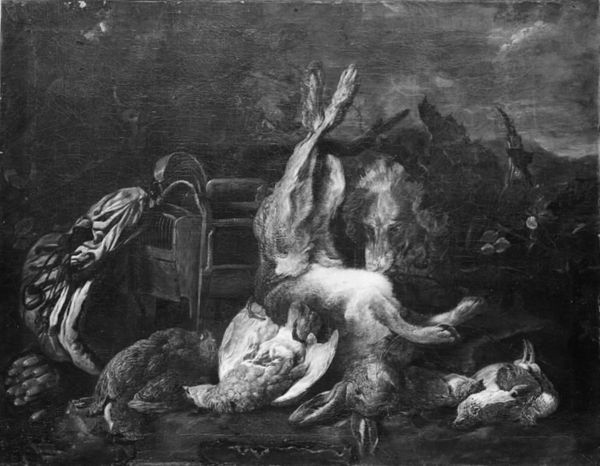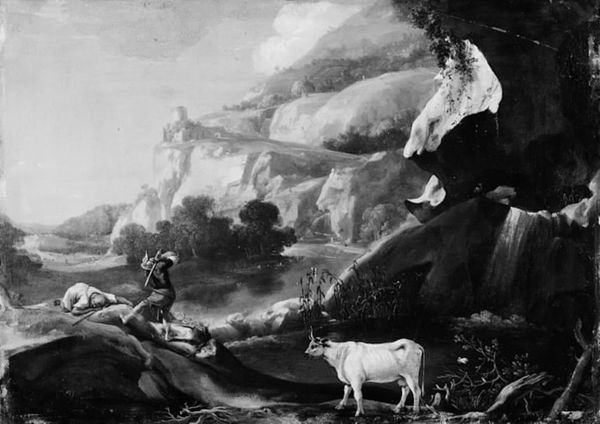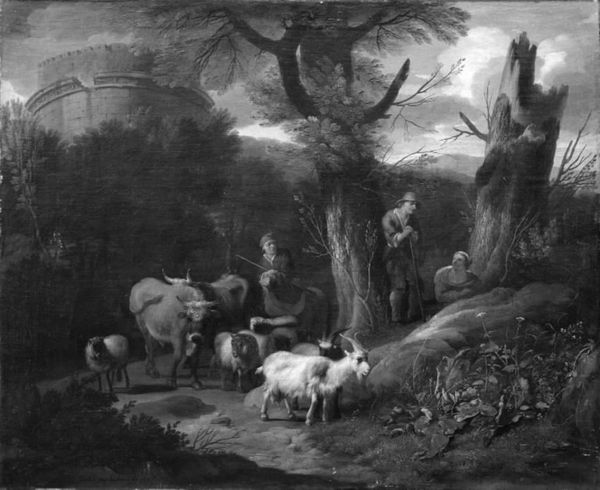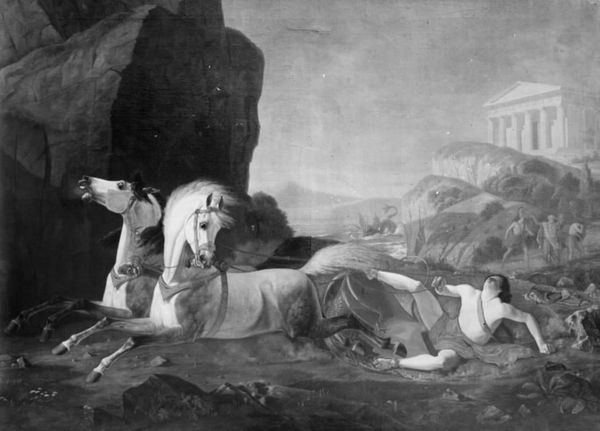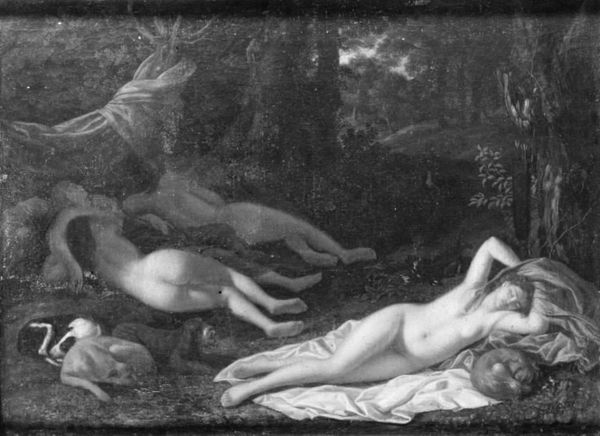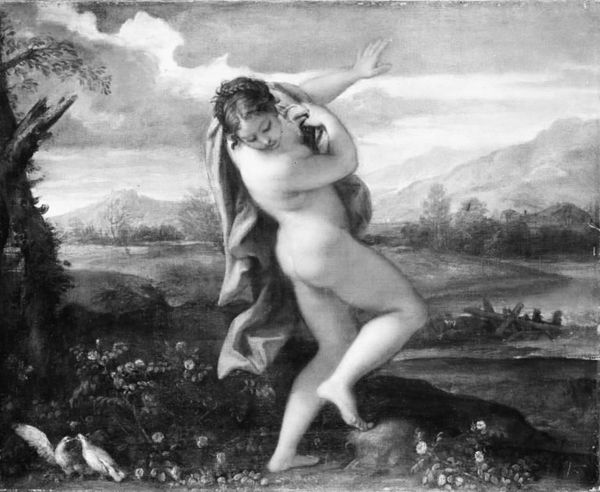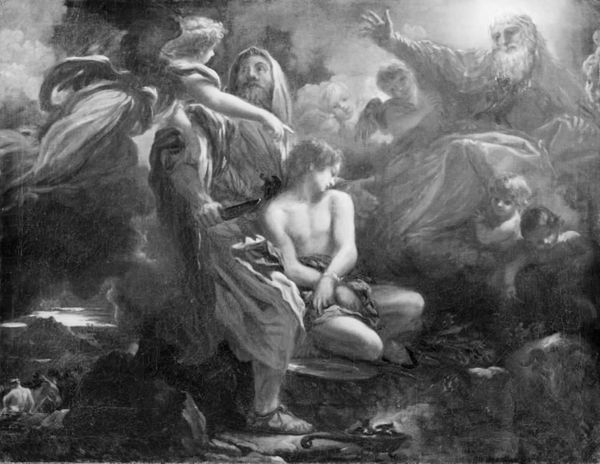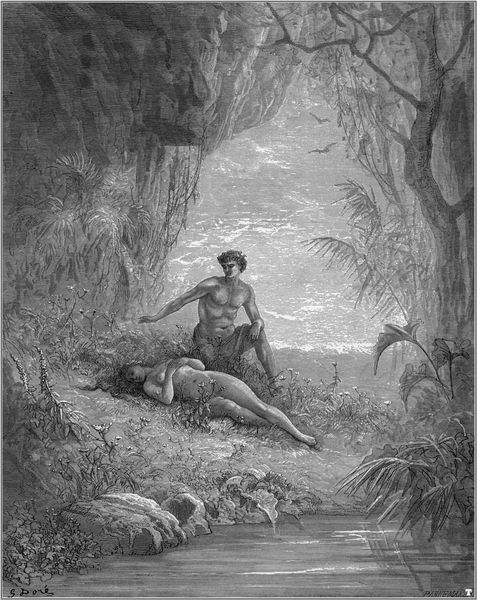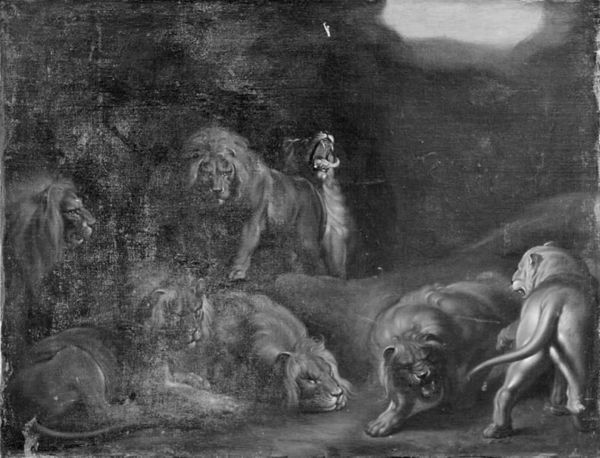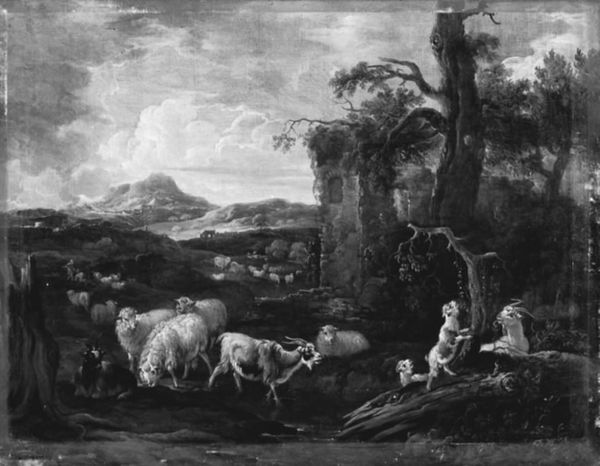
painting
#
baroque
#
painting
#
landscape
#
black and white
#
monochrome photography
#
surrealism
#
genre-painting
#
history-painting
#
monochrome
#
nude
#
monochrome
Dimensions: 25 cm (height) x 33 cm (width) (Netto)
Editor: Here we have François Verwilt’s "Bathing Nymph," created sometime between 1633 and 1691. It looks like an oil painting and it's currently located at the SMK in Copenhagen. What strikes me first is how the composition uses the dark, overgrown landscape to really focus our eye on the central figure. What do you see in this piece, from a formal perspective? Curator: Indeed. The interplay of light and shadow is paramount here. Observe how the artist manipulates chiaroscuro not just to model the figure, but to create a sense of depth and drama. The composition itself adheres to a Baroque sensibility, favoring dynamic movement and emotional impact over strict geometric balance. Do you notice the asymmetry in the arrangement of figures? Editor: Yes, the nymph is off-center, and then there’s a figure lurking in the shadows. How do those asymmetrical forms create an emotional impact? Curator: The asymmetrical composition invites the eye to travel, creating a visual tension. The gaze moves from the nymph, towards the obscured figure, enhancing the element of narrative and implied voyeurism. Note the diagonal thrusts of the landscape elements and the figures' placement – these create a palpable sense of unease and excitement. The artist is constructing not just a scene, but a carefully orchestrated visual experience. Editor: So the tension comes from the unbalanced elements working together. Curator: Precisely. The forms are deliberately designed to draw in the viewer and trigger an emotional response, playing with conventions of perspective and light to maximize the effect. Editor: I learned to see the painting not just as an illustration, but as a carefully crafted visual argument, creating unease in the observer by subtle choices about line and perspective. Curator: Yes, considering these design elements elevates our appreciation from passive observation to active analysis.
Comments
No comments
Be the first to comment and join the conversation on the ultimate creative platform.
